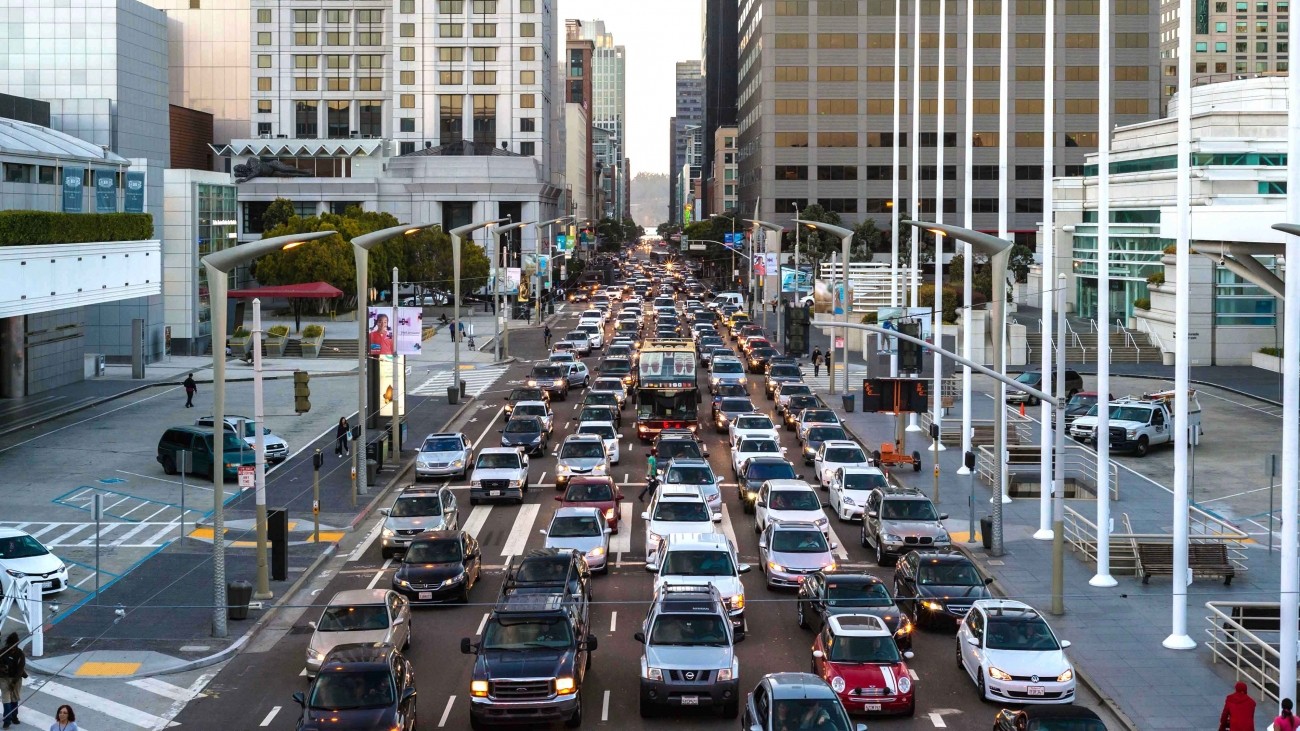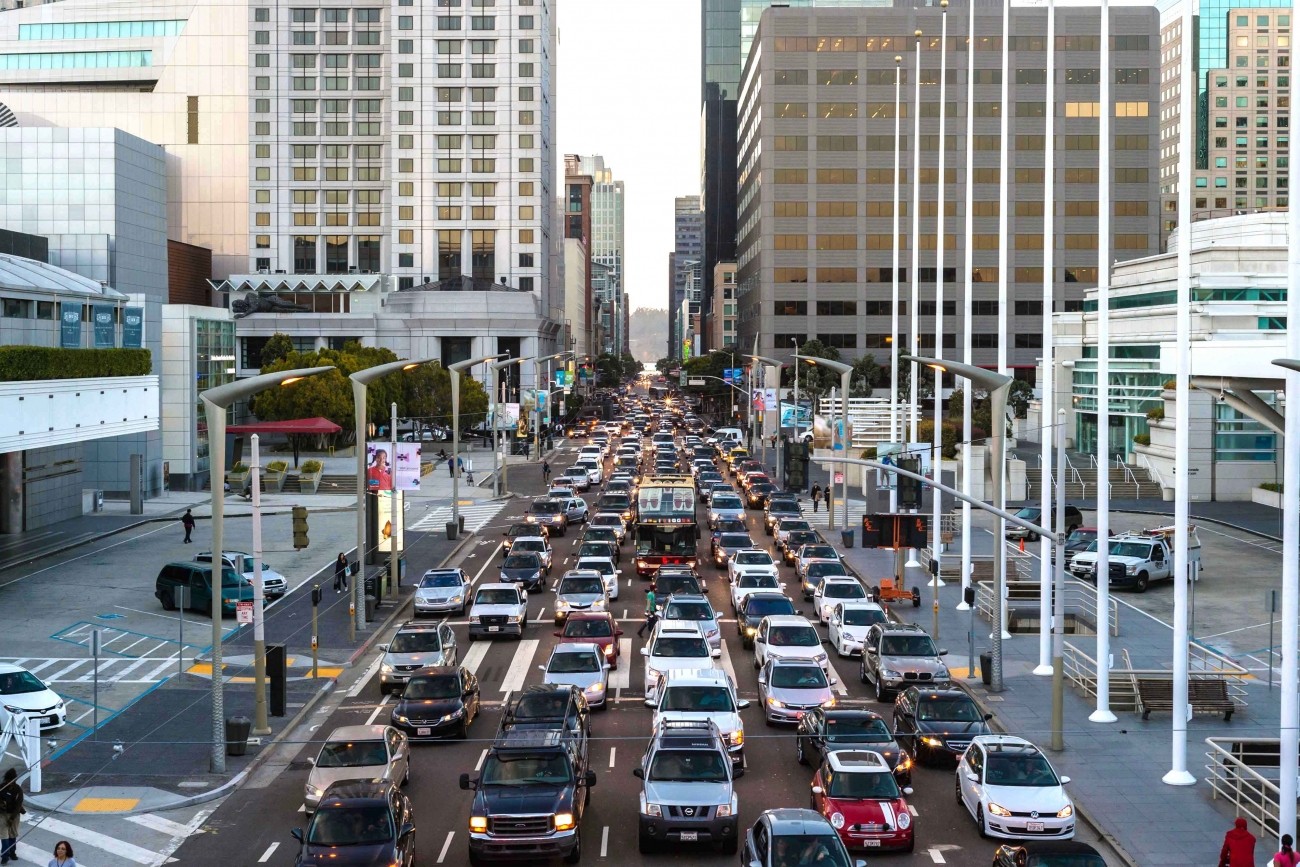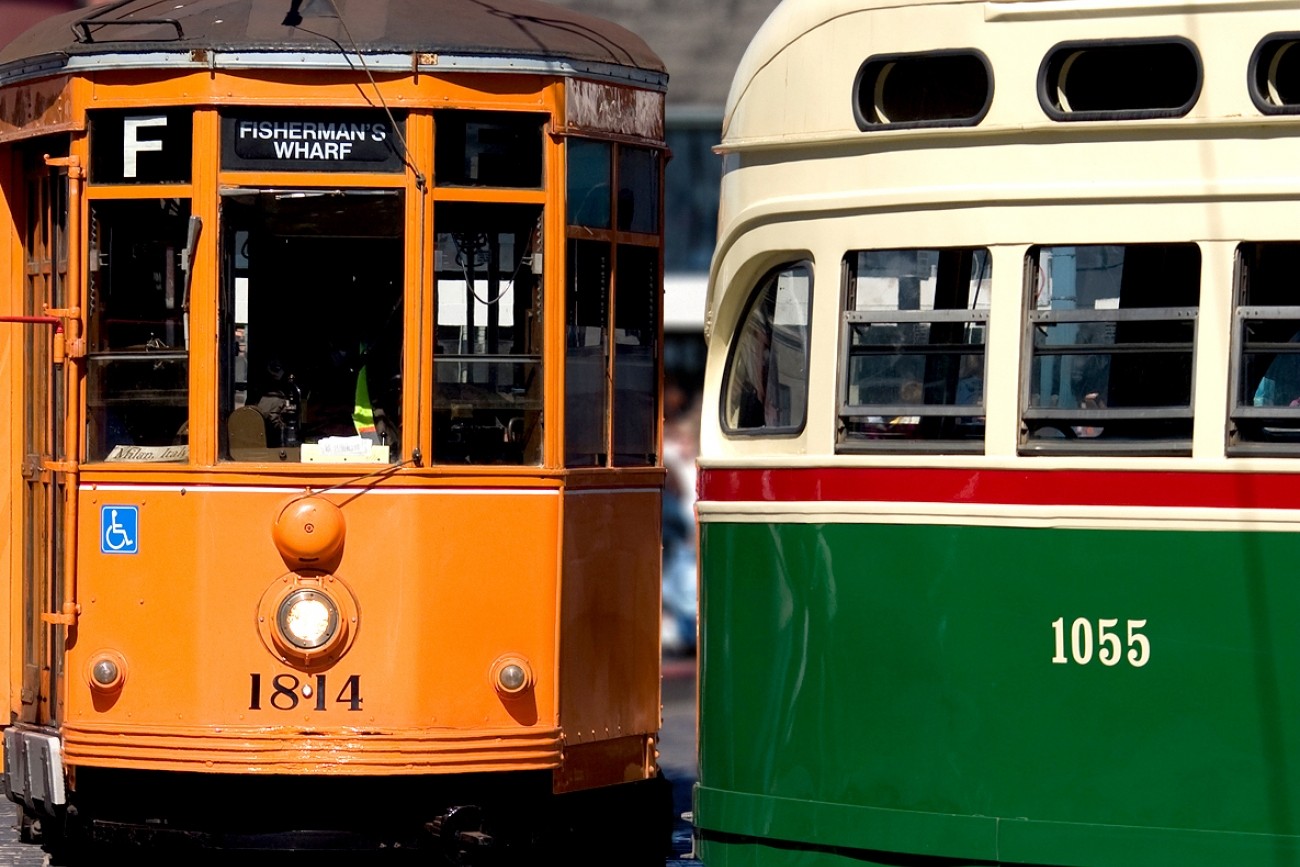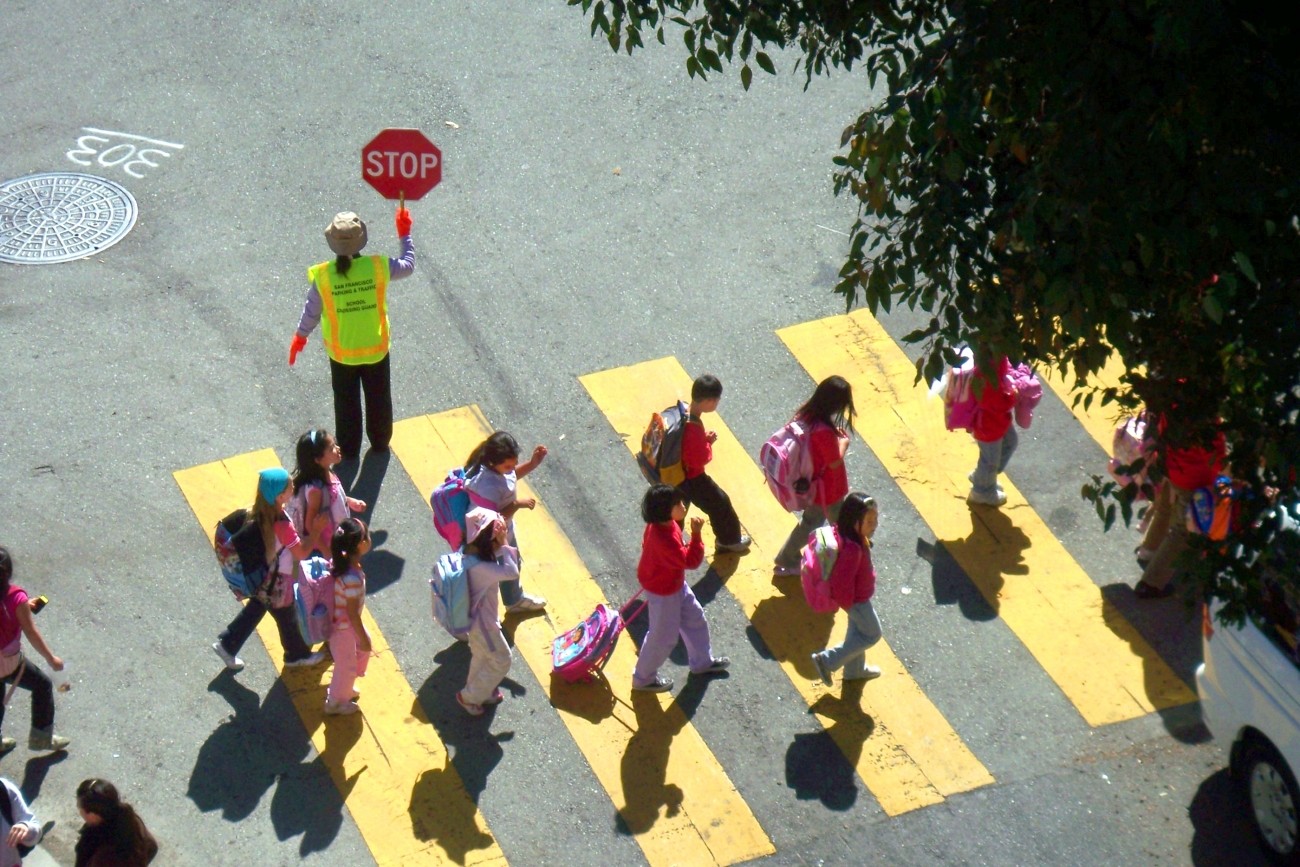
Photo: Sergio Ruiz, flickr
The Latest Stats on Congestion in San Francisco
The Transportation Authority has released the latest data on congestion in San Francisco. As has been reported by others and no doubt perceived by local travelers, traffic congestion on city streets has increased over the past two years. The reasons for congestion are many: a strong economy leading to dramatic job growth and a rising population, construction-related lane closures, the popularity of walking and bicycling, and the proliferation of new commercial transportation services.
What it Means for Transit, Walking, and Biking
Despite rising roadway congestion, surface transit speeds and transit reliability have remained steady, meaning transit is becoming more competitive with cars. Also of note, census data indicate that most new commuters are using public transit, walking, or cycling instead of driving. This indicates that investments promoting the City’s “Transit First” policy are working, luring some people away from traditional solo driving.
The City is Moving Forward on Several Fronts to Do More
Here are some concrete steps the city is taking do address rising congestion:
- The city’s biggest public transit providers—Muni, Caltrain and BART—are all putting new vehicles, facilities and train control systems into service, which will boost capacity.
- Major projects are underway to provide more efficient service and better connections. These include Central Subway, Caltrain electrification and downtown extension, the Salesforce Transit Center, Van Ness Improvement Project, Better Market Street, Geary Bus Rapid Transit, and Lombard Street Safety Project, among others.
- As these transformational projects move forward, the City continues to invest at the neighborhood-level. Examples of this include Vision Zero and Neighborhood Program projects to promote street safety and expand travel options citywide.
Funding Is Crucial
Funding plays an important role to keep all these efforts moving forward. A critical funding source for many of these projects is the city’s Prop K half-cent sales tax for transportation, which voters approved and is managed by the Transportation Authority.
Recently-enacted California Senate Bill 1 will generate approximately $60 million annually to help repave roads and maintain the transit system in San Francisco. The city also plans to compete for Senate Bill 1 funds, in the form of grants, to make biking and walking safer, purchase more Muni and BART trains, and help manage congestion in heavily trafficked corridors such as US 101.
Additionally, the voter-approved Regional Measure 3 bridge toll ballot measure will produce billions of dollars to support projects such as the Transbay downtown extension, Muni and BART fleet expansion, pedestrian and bicycle projects, ferry services, and more.


